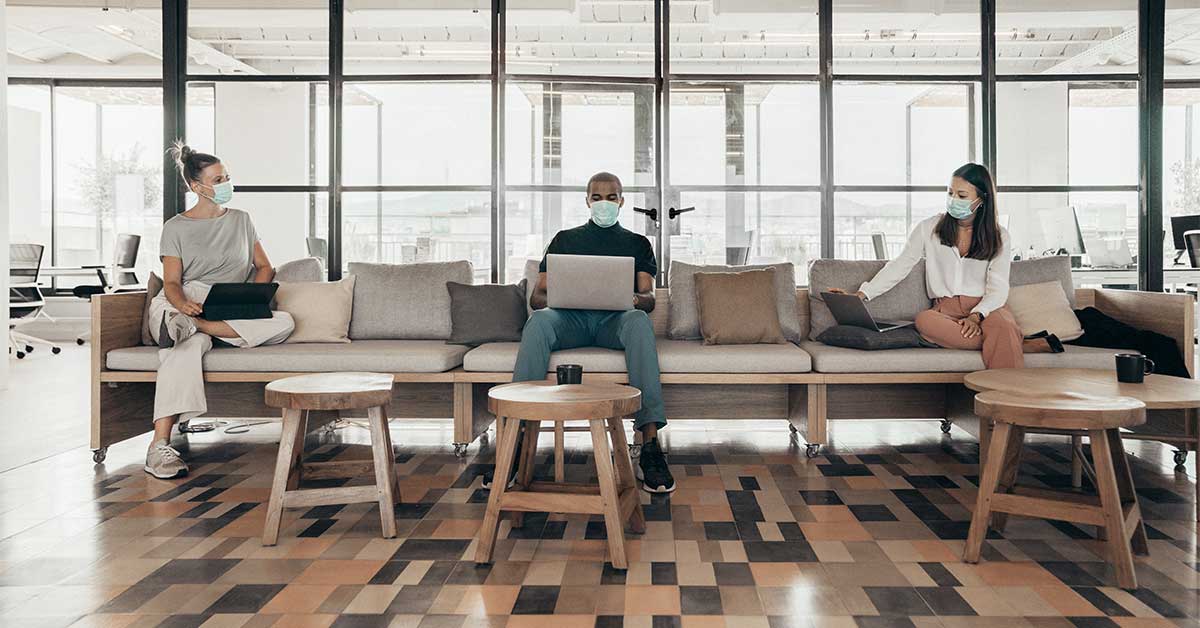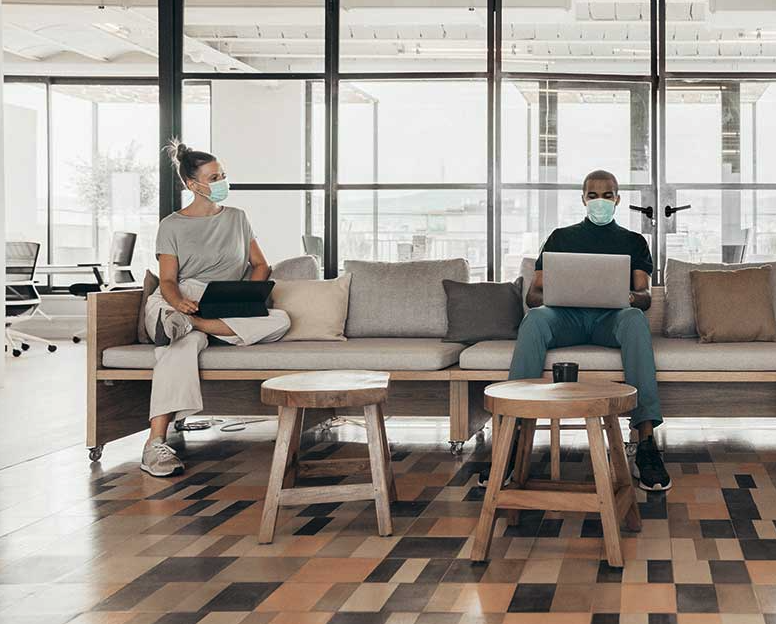JLL’s Akshay Thakur explores the smart building technologies that will enhance the work experience as we return to the office.

March 2021 marked a year since the pandemic forced many of us to work from home and has fundamentally changed how people will want to work going forward. According to a recent survey, 66 percent of employees want to alternate between different places of work after the pandemic. While work from home will not become a permanent fixture for most going forward, it will certainly be a weekly experience for many. As such, we anticipate work from home time to double post-pandemic to an average of 2.4 days.
This flexible and hybrid work model will mean our offices serve a different purpose than they did just one year ago – they will need to be revamped to be more conscious of the health and wellbeing of employees, as well as becoming places of greater collaboration for when people do make the commute into the office. As more employees return to the office, the shift toward a worker-centric model will be top of mind and with it, considerations for what the post-pandemic office will look like.
Health and wellbeing central to success
The health and wellbeing of the workforce, including a safe and healthy working environment, are paramount to business success. While the retrofitting of buildings to increase and improve their capabilities was well underway before the pandemic struck, COVID-19 has accelerated this trend and placed a renewed importance on factors relating to sanitation and employee wellbeing. As part of this, we are now seeing an increased focus on the use of smart environmental sensors that track noise, light, CO2, particulates and volatile organic compounds in the workplace. Beyond air quality concerns, there has been a significant shift in focus on dynamic cleaning schedules for meeting rooms, washrooms, and common areas that is replacing the traditional schedule-based cleaning to ensure shared spaces are cleaned more often and after each use.
Smart technology for a safer working environment
Contactless technology is also set to play a bigger part in the re-entry to the workplace as strict hygiene measures and the focus on employee wellbeing are more important than ever. Replacing common contact points with touch-free options removes areas where the virus may linger, protecting staff and operationally, reducing the number of surfaces which need to be cleaned regularly.
Not only has COVID-19 placed a renewed focus on the health and wellbeing of building occupants, but landlords themselves are adapting to the increased demands tenants are placing on the built environment. This is particularly noticeable in the office environment, where businesses are looking at solutions to address key concerns such as pinch points in high traffic areas, increasing purified air flow, disinfecting work areas, optimizing lighting solutions and increasing accessibility to outdoor spaces.
As an employee’s relationship with the office evolves, so too must the building itself – and one of the key answers to this is the development of smart environments that respond in real time to the usage of the building. While there is a myriad of options available to address these needs, sensor technology that measures occupancy levels of different areas of the workplace is a growing area.
We can also expect to see a growing use of cleaning robots, smart HVAC systems and innovations in lighting and climate control. Innovation will continue to present new solutions to increase the health, wellbeing and optimized usage of buildings. The benefit of the pandemic is that it has shown a tremendous willingness among landlords and occupants alike to adopt these solutions to create a more welcoming environment.
Now is the time to ensure that you have the right Visitor Management System (VMS) to accommodate the flow of visitors in your space. Check out WDM’s round up of the leading Visitor Management Systems here!
Accelerated change under the pandemic
The global COVID-19 pandemic has proven to be an accelerant of change and transformation for many organizations. Companies that have been through the journey from shock to response are now facing the challenge of transitioning to the next normal. With changing employee priorities and heightened expectations, health and wellbeing, hybrid working models, investment in technology and sustainable business practices will become the key focus for corporations as they reshape their strategy to become more adaptive, resilient, sustainable and responsible.
There has also been a marked uptake in the use of digital app-based tools, which are now acting as the main interaction interface between people and buildings. From booking meetings rooms, registering guests and monitoring building facilities, these new technologies are helping to facilitate the touchless approach that are becoming increasingly important in the built environment.
There is no denying the pandemic has created changes in the built environment and across cities that are here to stay. Whether they are immediately noticeable, such as the bike lanes now becoming ubiquitous throughout city centres, or technologies that operate below the surface, it is apparent that COVID-19 has accelerated technological adoption in a way that we did not imagine just a few years ago. Our collective return to offices will see many of us interact with the environment and the smart solutions that will greet us in a completely new way.
How each of us interact with the new office environment will depend entirely on the individual. There are those who have excelled in a work-from-home environment and may be more reluctant to return than those who gain energy from being in the office every day. What will matter for employers and building operators is to create the spaces that cater to different employee personalities and allow for the individualization of experience in the office. And what will become more prevalent are advanced technologies such as sensors, smart badges and digital apps, which hold the potential to enhance the experience of working in the building.


